|
Farnsworth
Television and Radio Corporation in World War Two
Fort Wayne, IN
1939-1949
This page updated 4-2-2022.
The short lifespan of the Farnsworth
Television and Radio Corporation obscures the fact that its founder,
Philo T. Farnsworth, dedicated his life to the invention of the
television. Since World War Two, the television has gone from a
novel curiosity that started replacing radios in the home as a source of
news, sports, and entertainment to large screen devices that have become
ubiquitous in the modern world. Lost in all of this is that Philo
T. Farnsworth was the inventor of the television. He is the
inventor no one knows, at least to the general public. Among
television and electronic historians and enthusiasts, his story is well
known. In Fort Wayne, IN, where he lived for many years and
established his first factory, he is also well known. The Fort
Wayne house in which he lived has a historical marker in front of it.
Just as the story of Mr. Farnsworth's work
on the invention of the television is unknown, so is the story of
what his company did during World War Two. Some of this is because
Farnsworth was doing electronic development on several products and made
radios and other electronic products. These types of products did not
get much press nor historical coverage compared to the larger and more
recognizable tanks, trucks, guns, aircraft, and ships that have
become well-known in post-World War Two years.
A very small amount of information is
available on what the Farnsworth Television and Radio Corporation did in
World War Two. However, the work it was doing on the products it
made to help win World War Two won it seven Army-Navy "E" awards.
It must have been doing the right thing.
In 1949 Farnsworth sold his company to
International Telephone and Telegraph. There were two main reasons for
this. Farnsworth took out many loans to expand electronic equipment
production for the war effort. Then the company had difficulty repaying these loans. That problem might have been solvable, but
Philo Farnsworth was mentally, emotionally, and physically exhausted
after years of legal battles with RCA over patent infringement.
RCA was the 800 pound gorilla in the electronics industry at the time,
and its chairman David Sarnoff would go to any lengths to make sure it
stayed that way.
To add insult to injury, RCA purchased the
Farnsworth Marion plant to make television picture tubes.

The Farnsworth Television and Radio
Corporation Fort Wayne, IN plant won the Army-Navy "E" Award two times
during World War Two.
The Farnsworth Television and Radio Corporation Marion, IN plant won the
Army-Navy "E" Award five times during World War Two.
Farnsworth Television and Radio Corporation World War Two Products:
BC-342 series shortwave communications receiver is the product that is
most identifiable with Farnsworth during World War Two. It was the two
BC-342s I found in museums that led to this webpage. Farnsworth
also built the BC-312 radio receiver for the U.S. Signal Corps.
Farnsworth was the exclusive manufacturer of this receiver during World
War Two.
However, as Tables 1 and 2 demonstrate, the
BC-342 was just one of many pieces of electronic equipment Farnsworth
built for both the U.S. Army and U.S. Navy. The U.S. Navy placed
six orders to the company for "Sound Signal Apparatus," which was most
likely sonar equipment to detect enemy submarines. The Navy also
had two orders for vacuum tubes, which is the only historical reference
to the company building this type of product. Between its
two plants, Farnsworth provided $125,356,000 worth of electronic equipment needed
to win World War Two.
In 1927 Philo Farnsworth invented the first
electronic video camera and cathode ray tube to display the images from
the video camera. This also led to early technology for infrared
detection and imaging. During World War Two, this led to the M3 Snooperscope mounted on an M1 carbine. Unfortunately, Farnsworth
did not get the opportunity to build the Snooperscopes.
Farnsworth's company, however, receive a research contract from the
National Defense Research Corporation to develop and build a supply of
electron multiplier tubes for non-imaging detectors. The tubes
were for use in other
research laboratories working on non-imaging infrared detectors.
Table 1 - Farnsworth Corporation's
Major World War Two Contracts - Fort Wayne, IN Plant
The information below
comes from the "Alphabetical Listing of Major War Supply
Contracts, June 1940 through September 1945." This was
published by the Civilian Production Administration,
Industrial Statistics Division. Table added 4-2-2022. |
|
Product |
Contract Amount |
Contract Awarded
|
Completion
Date |
|
Radio Equipment - Army |
$226,000 |
10-1940 |
6-1941 |
|
Transmitters Radio - Army |
$168,000 |
6-1941 |
4-1942 |
|
Receivers Radio - Army |
$72,000 |
8-1941 |
1-1942 |
|
Lighting Equipment - Army |
$65,000 |
10-1941 |
1-1942 |
|
Communication Equipment - Navy |
$900,000 |
2-1942 |
10-1943 |
|
Engineering Services - Army |
$200,000 |
9-1942 |
11-1942 |
|
Receivers Radio - Army |
$1,011,000 |
10-1942 |
8-1943 |
|
Radio Parts - Army |
$5,198,000 |
12-1942 |
1-1944 |
|
Vessel Equipment - Navy |
$3,491,000 |
4-1943 |
1-1944 |
|
Communication Equipment - Army |
$463,000 |
4-1943 |
10-1943 |
|
Radio Receivers - Army |
$2,442,000 |
5-1943 |
6-1944 |
|
Radio Receivers - Army |
$737,000 |
5-1943 |
6-1944 |
|
Radio Receivers - Army |
$1,135,000 |
5-1943 |
6-1944 |
|
Radio Chests - Army |
$851,000 |
5-1943 |
6-1945 |
|
Antenna Tuning Units - Army |
$854,000 |
5-1943 |
3-1944 |
|
Communication Equipment - Army |
$50,000 |
6-1943 |
11-1943 |
|
Communication Equipment - Navy |
$58,000 |
6-1943 |
7-1943 |
|
Sound Signal Apparatus - Navy |
$3,047,000 |
6-1943 |
1-1945 |
|
Electrical Apparatus - Navy |
$50,000 |
7-1943 |
3-1944 |
|
Sound Signal Apparatus - Navy |
$452,000 |
7-1943 |
10-1944 |
|
Sound Signal Apparatus - Navy |
$6,307,000 |
8-1943 |
12-1945 |
|
Airplane Equipment - Army |
$100,000 |
9-1943 |
6-1944 |
|
Communication Equipment - Army |
$74,000 |
9-1943 |
5-1944 |
|
Communication Equipment - Army |
$5,005,000 |
12-1943 |
7-1945 |
|
Sound Signal Apparatus - Navy |
$302,000 |
2-1944 |
11-1944 |
|
Sound Signal Apparatus - Navy |
$947,000 |
3-1944 |
1-1945 |
|
Sound Signal Apparatus - Navy |
$477,000 |
4-1944 |
11-1945 |
|
Communication Equipment - Army |
$308,000 |
4-1944 |
5-1945 |
|
Radio Receivers - Navy |
$150,000 |
6-1944 |
5-1945 |
|
Vacuum Tubes - Navy |
$89,000 |
6-1944 |
12-1944 |
|
Radio Transmitters BC684 - Army |
$3,238,000 |
9-1944 |
6-1945 |
|
Radar Conversion Kits - Navy |
$4,432,000 |
11-1944 |
9-1945 |
|
Radio Equipment - Army |
$2,160,000 |
12-1944 |
12-1945 |
|
Vacuum Tubes - Navy |
$249,000 |
2-1945 |
9-1945 |
|
Signal Equipment - Navy |
1.394,000 |
3-1945 |
11-1945 |
|
Vacuum Tubes - Navy |
$189,000 |
3-1945 |
1-1946 |
|
Radio Equipment - Navy |
$134,000 |
3-1945 |
12-1945 |
|
Vacuum Tubes - Navy |
$239,000 |
5-1945 |
1-1946 |
|
Research Services - Navy |
$186,000 |
5-1945 |
4-1946 |
|
Research Services - Navy |
$106,000 |
5-1945 |
5-1946 |
|
Radio Equipment - Navy |
$12,726,000 |
6-1945 |
6-1946 |
|
Power Supply Unit - Navy |
$212,000 |
7-1945 |
1-1946 |
|
Radio Equipment - Navy |
$73,000 |
7-1945 |
12-1945 |
|
Total |
$60,567,000 |
|
|
Table 2 - Farnsworth
Corporation's Major World War Two Contracts - Marion, IN Plant
The information below
comes from the "Alphabetical Listing of Major War Supply
Contracts, June 1940 through September 1945." This was
published by the Civilian Production Administration,
Industrial Statistics Division. Table added 4-2-2022. |
|
Product |
Contract Amount |
Contract Awarded
|
Completion
Date |
|
Radio Receivers - Army |
$652,000 |
12-1940 |
10-1941 |
|
Airplane Equipment - Foreign Order |
$57,000 |
12-1940 |
7-1942 |
|
Receivers Radio - Army |
$223,000 |
6-1941 |
3-1942 |
|
Radio Equipment - Army |
$724,000 |
10-1941 |
2-1942 |
|
Radio Equipment - Army |
$289,000 |
12-1941 |
3-1942 |
|
Radio Equipment - Army |
$5,528,000 |
3-1942 |
12-1942 |
|
Radio Parts - Army |
$112,000 |
2-1942 |
8-1942 |
|
Receivers Radio - Army |
$5,684,000 |
9-1942 |
1-1943 |
|
Radio Equipment - Army |
$1,522,000 |
9-1942 |
12-1943 |
|
Receivers Radio - Army |
$475,000 |
10-1942 |
11-1942 |
|
Radio Equipment - Army |
$1,566,000 |
10-1942 |
9-1943 |
|
Receivers Radio - Army |
$136,000 |
11-1942 |
12-1942 |
|
Receivers Radio - Army |
$481,000 |
11-1942 |
2-1943 |
|
Receivers Radio - Army |
$3,442,000 |
11-1942 |
11-1943 |
|
Radio Equipment - Army |
$2,001,000 |
11-1942 |
11-1943 |
|
Radio Parts - Army |
$1,264,000 |
12-1942 |
12-1943 |
|
Radio Transmitters - Army |
$322,000 |
5-1943 |
3-1944 |
|
Transmitter Parts - Army |
$5,157,000 |
5-1943 |
6-1944 |
|
Antenna Training Units - Army |
$539,000 |
7-1943 |
6-1944 |
|
Radio Receivers - Army |
$293,000 |
8-1943 |
4-1944 |
|
Radio Receivers - Army |
$1,387,000 |
8-1943 |
5-1944 |
|
Radio Receivers BC344D - Army |
$94,000 |
9-1943 |
12-1944 |
|
Transmitter Unite Cases - Army |
$1,315,000 |
11-1943 |
11-1944 |
|
Radio Receivers - Army |
$404,000 |
11-1943 |
12-1944 |
|
Radio Receivers - Army |
$1,531,000 |
11-1943 |
4-1945 |
|
Radio Receivers - Army |
$109,000 |
11-1943 |
12-1944 |
|
Radio Receivers SCR193 - Army |
$412,000 |
1-1944 |
8-1944 |
|
Sound Signal Apparatus - Navy |
$556,000 |
3-1944 |
4-1945 |
|
Radio Transmitters - Army |
$4,647,000 |
3-1944 |
12-1944 |
|
Tube Boxes Electric CHD - Army |
$2,946,000 |
3-1944 |
12-1946 |
|
Radio Equipment - Navy |
$2,249,000 |
5-1944 |
5-1945 |
|
Radio Transmitters BC684B - Army |
$451,000 |
6-1944 |
2-1945 |
|
Classified - Army |
$2,222,000 |
8-1944 |
9-1945 |
|
Radio Transmitters - Army |
$10,332,000 |
9-1944 |
4-1946 |
|
Tuning Unit Assemblies - Army |
$73,000 |
3-1945 |
11-1945 |
|
Radio Sets SCR658 - Army |
$908,000 |
4.1945 |
5-1945 |
|
Radio Equipment - Navy |
$4,504,000 |
4-1945 |
3-1946 |
|
65Transformeres C282 |
$136,000 |
5-1945 |
5-1946 |
|
65Radio Tuning Units |
$82,000 |
5-1945 |
4-1946 |
|
Total |
$64,789,000 |
|
|
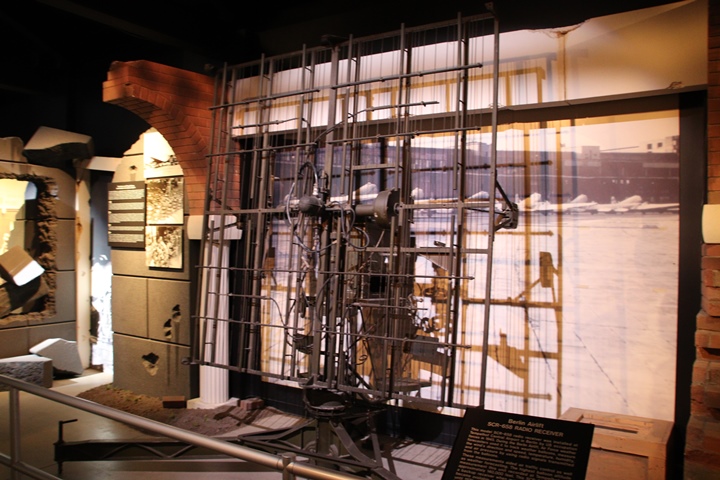
I have walked by this Farnsworth-built
SCR-658 Radio Direction Finder innumerable times at the National Museum
of the United States Air Force. During my trip to the museum in
March 2022, I stopped and took a more thorough look at the unit than I
had at any time in the past. Author's photo added 4-2-2022.
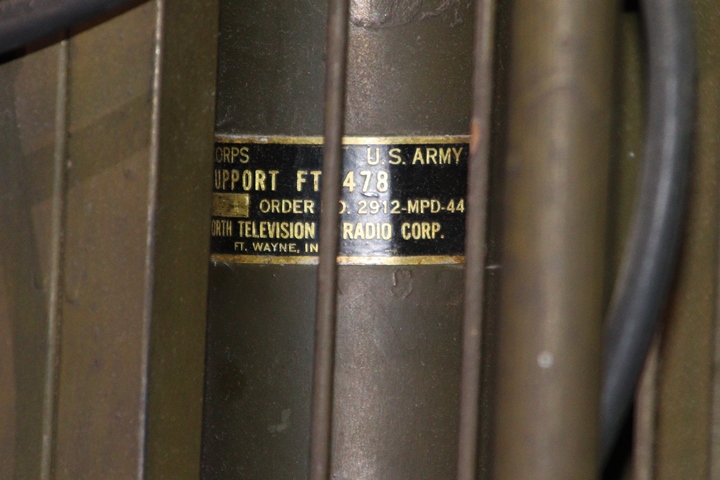
This had been hiding in plain sight for me
over the several years I have researched the Farnsworth Television and
Radio Company of Fort Wayne. Every time I visit this museum, I
always find something new I had previously missed. Author's photo
added 4-2-2022.
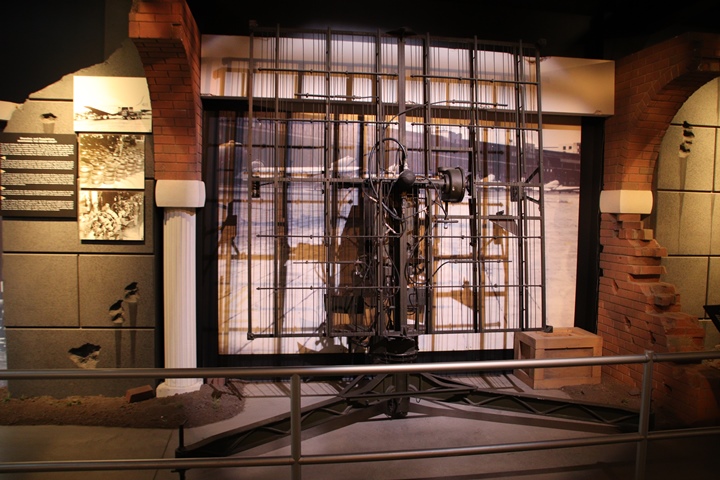
Two items make this even more
significant than just being a Farnsworth product. Firstly, this is
the only known SCR-658 known to still exist. Secondly, this
particular SCR-628 was set up by American forces in 1945 at Tempelhof
airport in Berlin. It was used to track weather balloons to
provide the weather forecasters at Tempelhof with information for American pilots using the airport. This SCR-628 was used during
the Berlin Airlift and greatly aided the 24 hour operations of bringing
supplies safely to the airport. Author's photo added 4-2-2022.
Number of SCR-299,399, and 499 mobile radio sets built during World War
Two
The BC-342 was used in these three radio sets. This
gives an estimate of how many BC-342s were built |
| 1942 |
1943 |
1944 |
1945 |
Total |
| 1,571 |
5,911 |
5,317 |
1,907 |
14,706 |
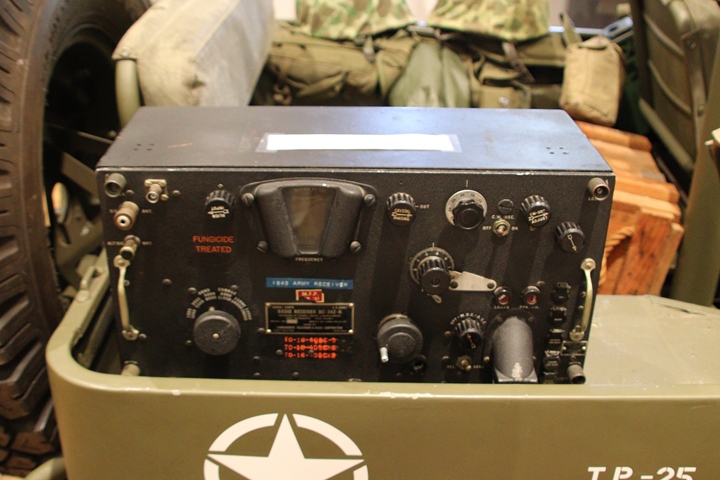
The best restoration of a Farnsworth-built BC-342-N
I have found so far is on display at the Veteran's Memorial Center
Museum in Merritt Island, FL. Author's photo added 7-27-2021.
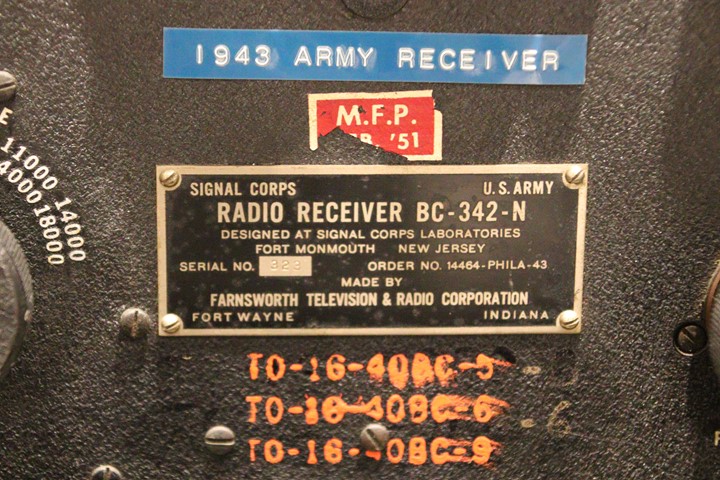
This example is serial number 323.
Author's photo added 7-27-2021.
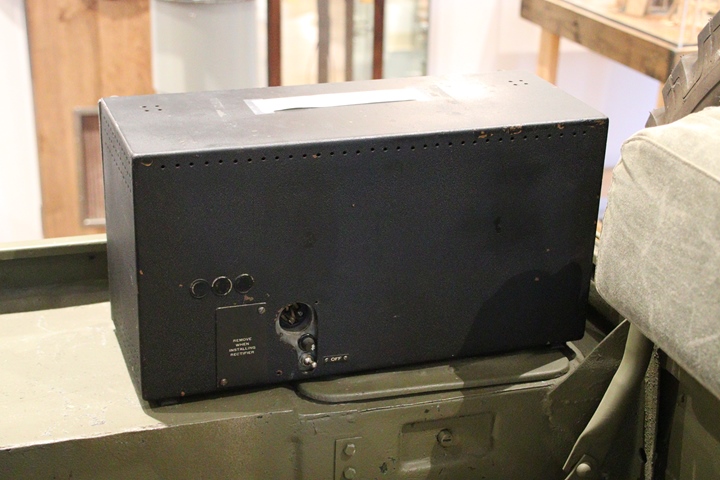
Author's photo added 7-27-2021.
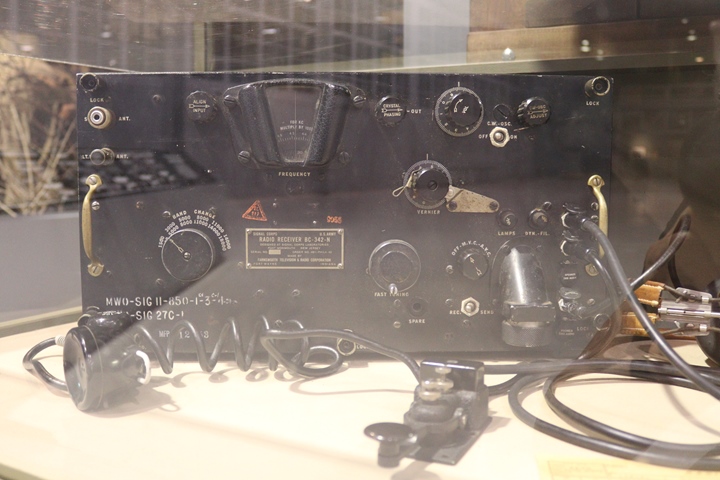
This Farnsworth BC-342-N is on display at
the EAA Museum in Oshkosh, WI. It is serial number 1011.
Author's photo.
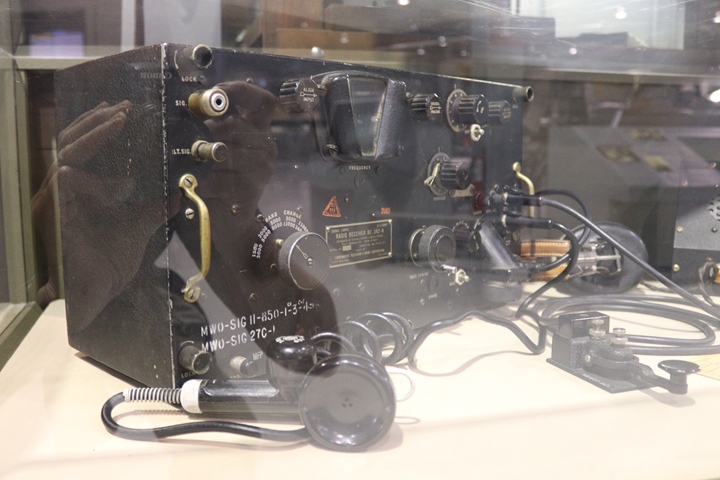
Author's photo.
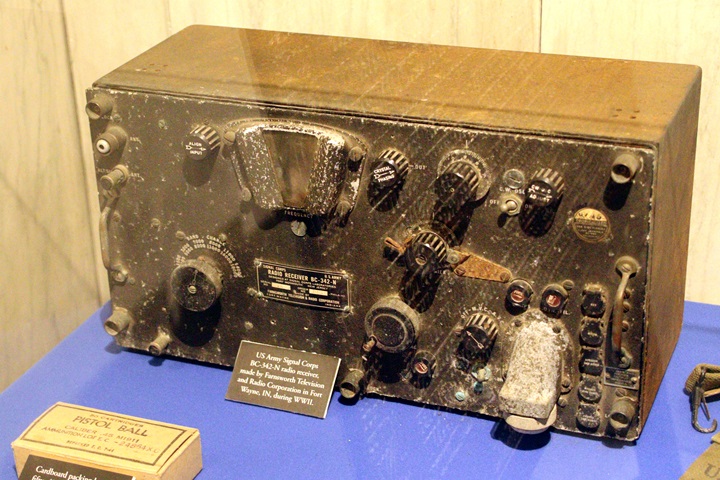
This Farnsworth BC-342-N is on display at
the Indiana War Memorial in downtown Indianapolis, IN.
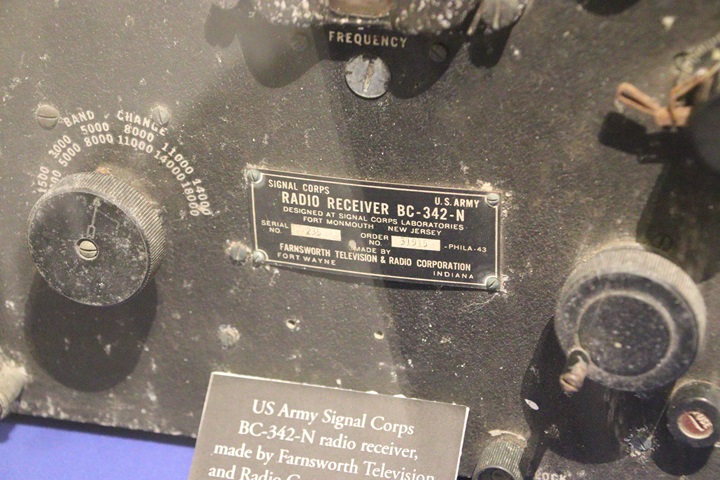
The receiver is serial number 235.
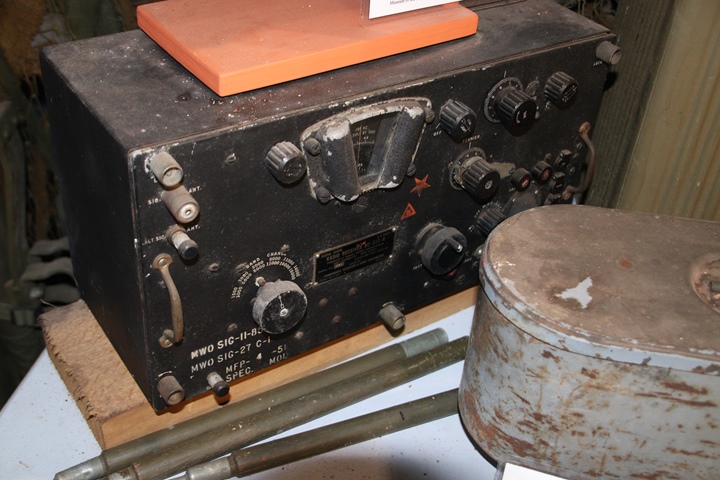
This Farnsworth-built BC-312-N is on display
at the Museum of the Soldier in Portland, IN. Author's photo added
5-5-2021.
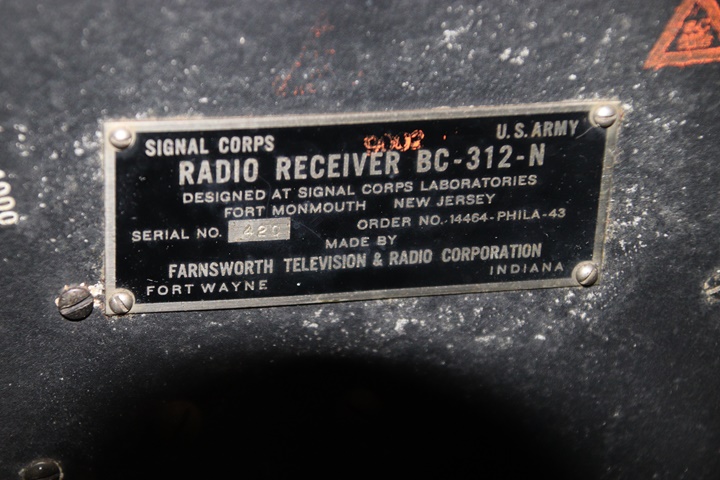
The receiver on display is serial number
420. Author's photo added 5-5-2021.
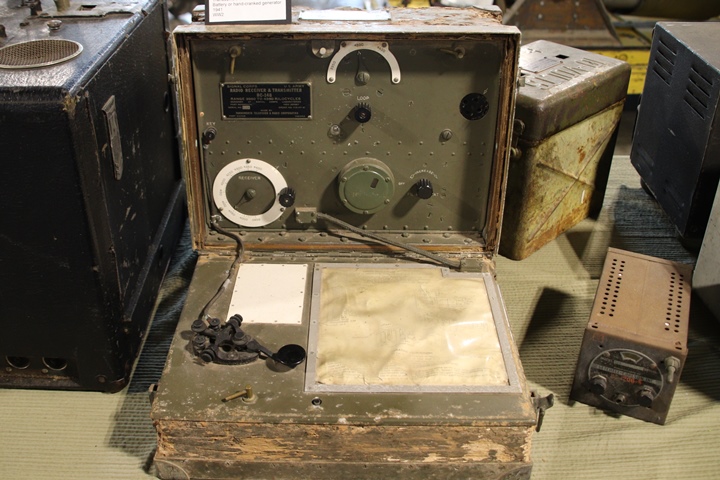
This 1941 Farnsworth-built BC-148 is on
display at the Regional Military Museum in Houma, LA. The BC-148
had a continuous wave transmitter/receiver with a range of five miles.
Author's photo added 4-2-2022.
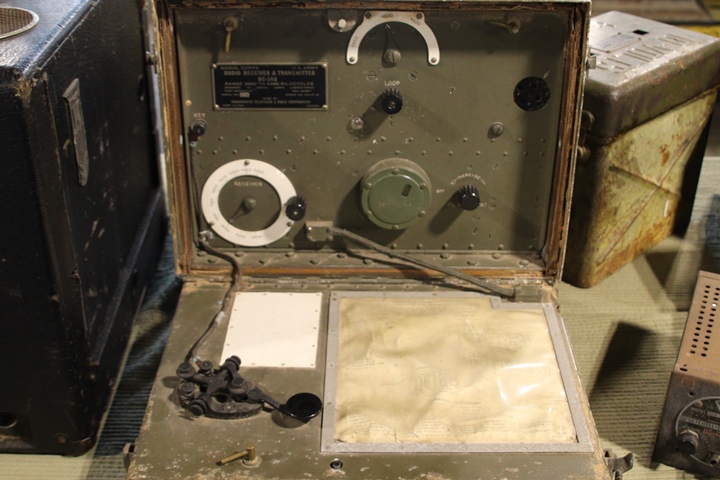
The receiver used dry cell batteries and the
transmitter required a hand cranked generator to operate. Author's
photo added 4-2-2022.
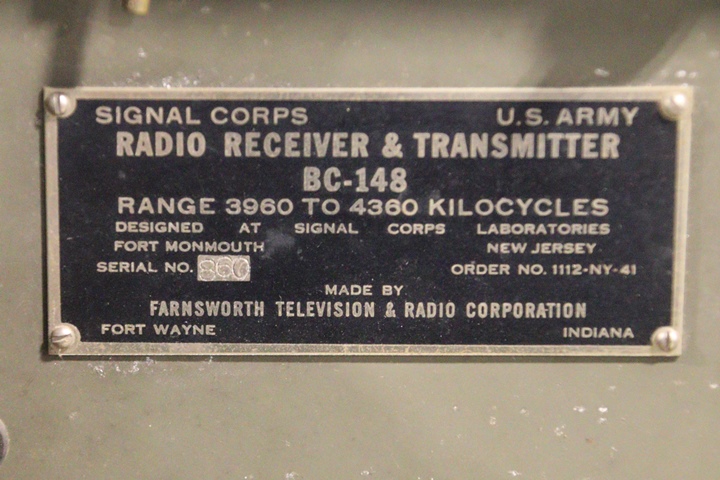
Author's photo added 4-2-2022.
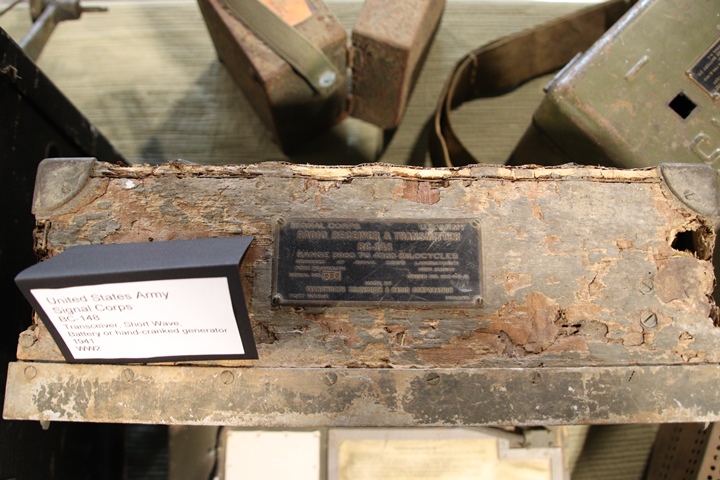
The case for the BC-148 was constructed of
both wood and metal. Author's photo added 4-2-2022.
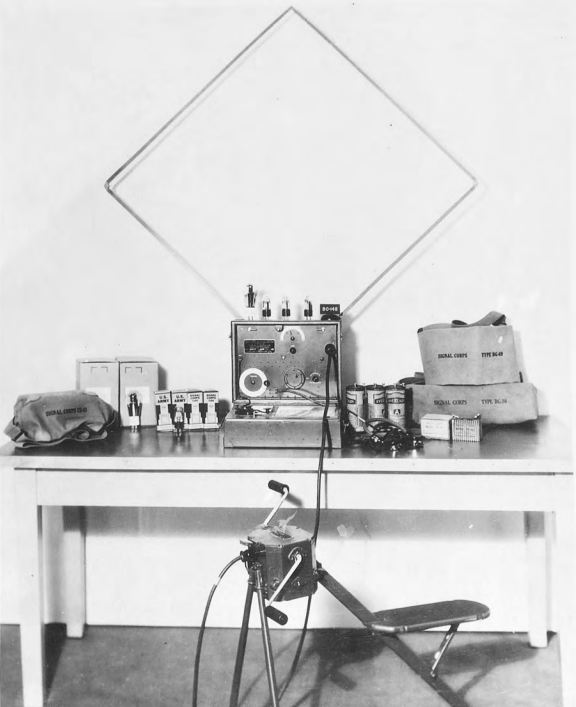
This historical photo shows the BC-148 with
the LP-7 antenna loop and GN-35 hand crank generator that powered the
transmitter. It required two soldiers or a vehicle to carry the
76.5 lbs of the entire unit. Image added 4-2-2022.
Farnsworth-built World War Two Radios:
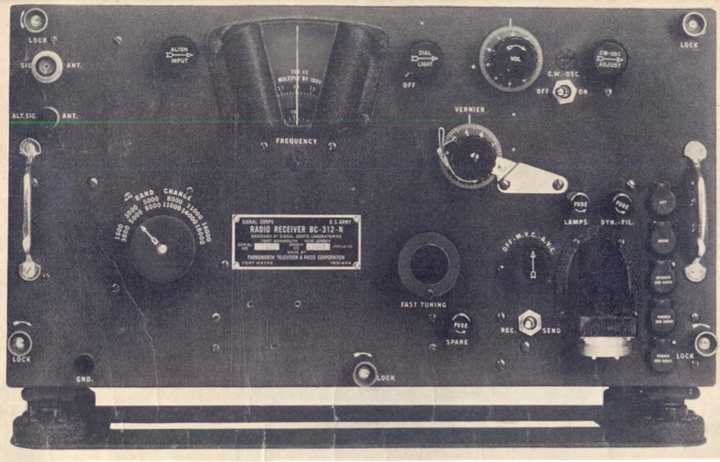
Farnsworth-built radio receiver BC-312-N.
Image added 1-2-2022.

Farnsworth-built radio receiver BC-312-NX.
Image added 1-2-2022.
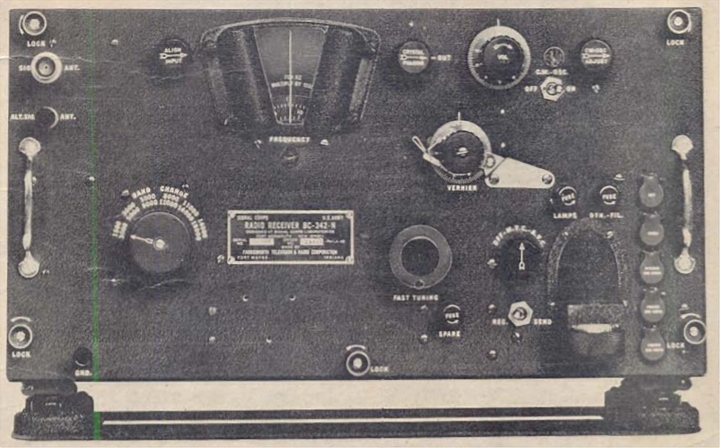
Farnsworth-built radio receiver BC-312-NX.
Image added 1-2-2022.
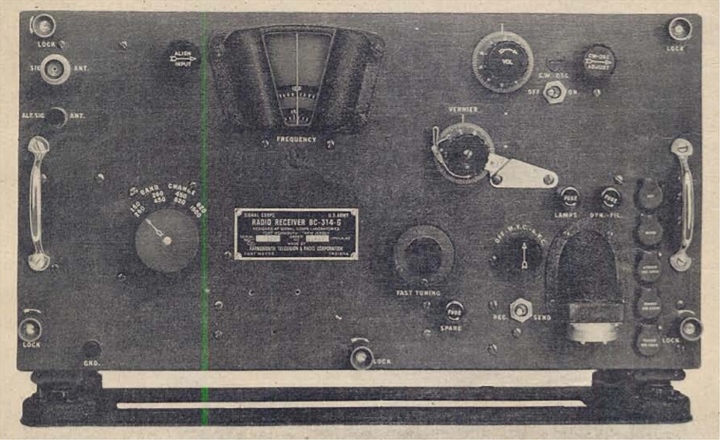
Farnsworth-built radio receiver BC-314-G.
Image added 1-2-2022.
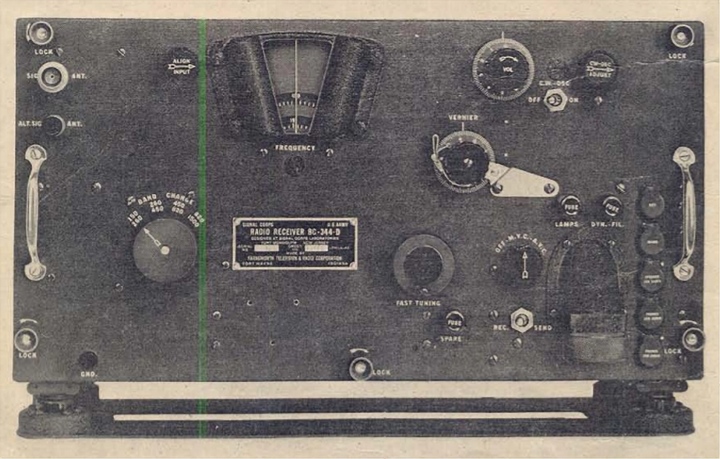
Farnsworth-built radio receiver BC-344-D. Image added 1-2-2022.
Farnsworth also did development on TV
monitoring of falling bombs. A television camera and transmitter
were mounted in an empty bomb casing and a television receiver was
mounted in the rear of a B-25 test aircraft. The inert bomb with
the transmitter inside and the camera in the nose was dropped after the normal bomb
load. The camera could then give a real-time view of where the
bombs landed. American
strategic bombing was not nearly as accurate as its advocates
proclaimed during World War Two and since that time. In many cases, if
American B-17s and B-24s were to hit the right city, let
alone the factory inside it, they were lucky. More than once,
American aircraft accidently bombed Switzerland, a neutral country.
While the Farnsworth monitoring system did
not help guide the bombs to the proper target, it did attempt to monitor
where they landed. In June 1944,
tests were made on the system at Tonopah Army Air Force Base in Nevada,
where it was successfully able to monitor the landing locations of the
bombs.
There is no evidence it was put into production.
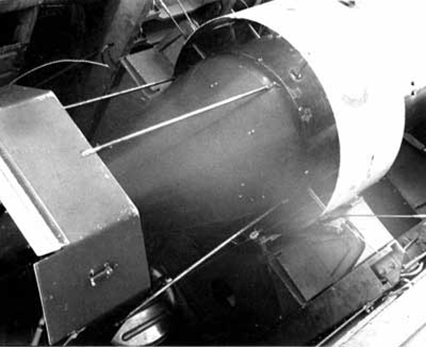
This is a television camera and transmitter
mounted to a bomb.
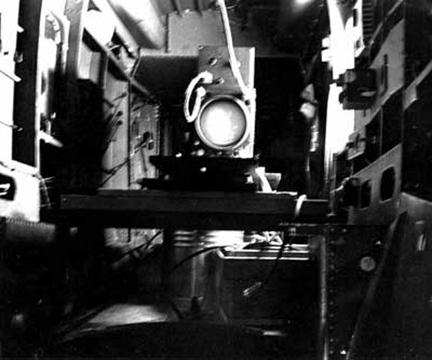
Inside the aft section of the B-25, an
operator could monitor the falling of the bombs on this TV monitor.
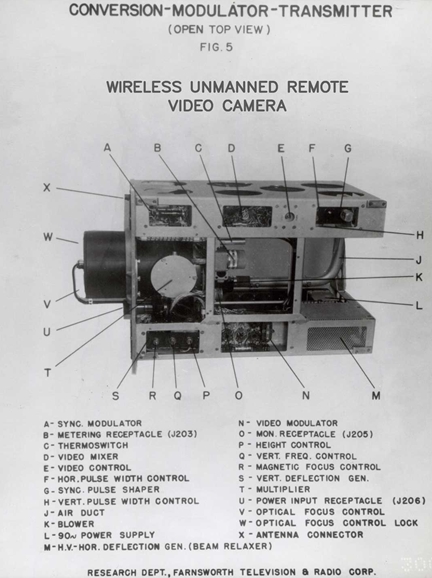
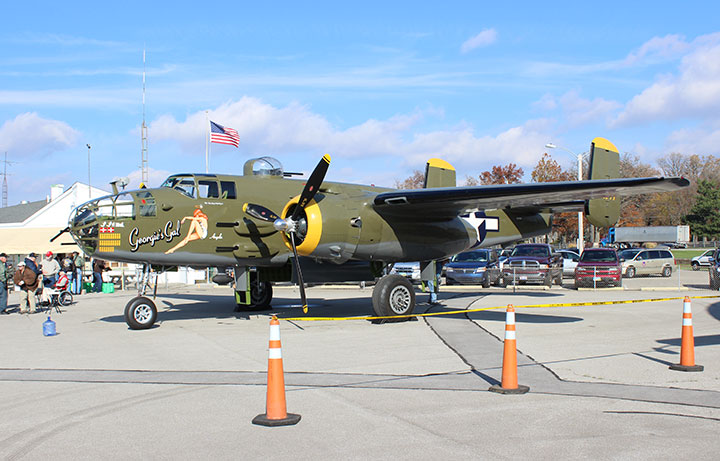
A B-25 similar to this one was used to
conduct the TV-monitored bombing tests during World War Two.
Author's photo.
Post-World War Two Farnsworth Television
Sets: The following Farnsworth televisions are on display at
the Early Television Museum in Hilliard, OH. The museum has an
impressive collection of not only Farnsworth sets, but many other early
manufacturers of televisions as well.
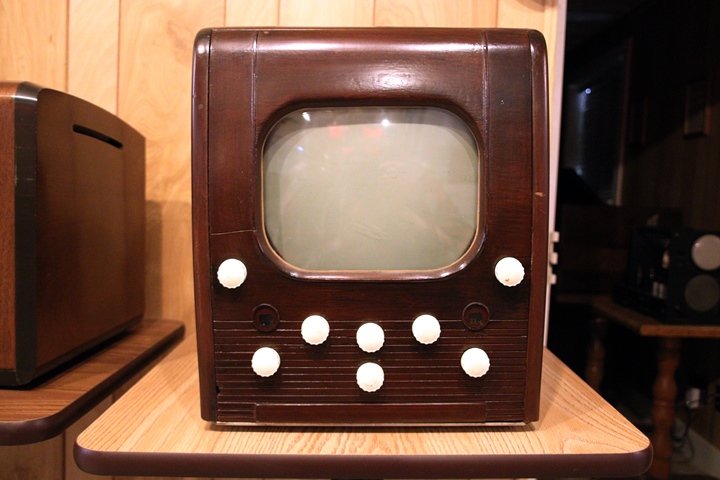
This is a prototype of a
10-inch television that went into production in 1946. Author's
photo added 5-5-2021.
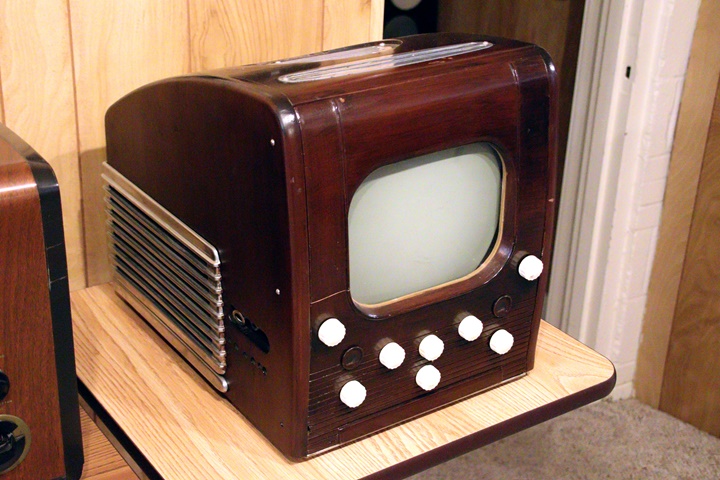
The cabinet is original,
and the electronics have been restored to working order. Just what
one needed to tune into the Howdy Doody Show! Author's photo added
5-5-2021.
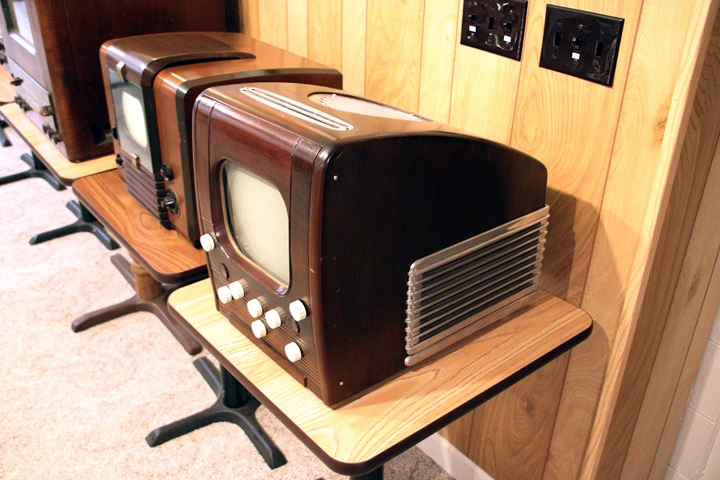
Author's photo added
5-5-2021.
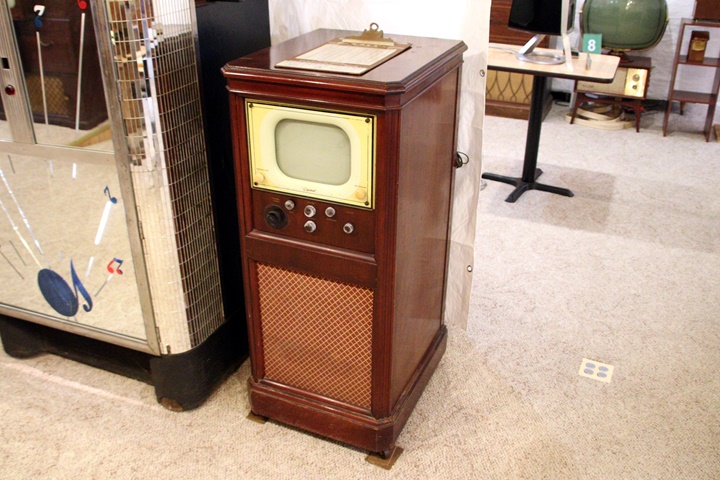
This 10-inch model 661-P
was introduced in 1947 and was the first console television from
Farnsworth. Author's photo added 5-5-2021.
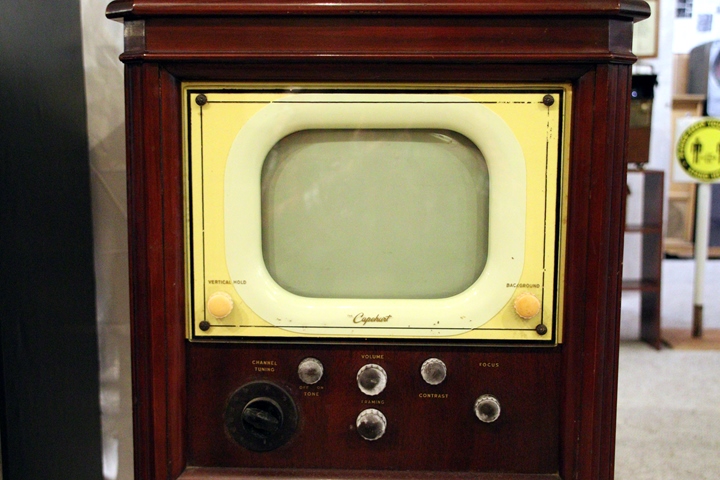
Author's photo added
5-5-2021.
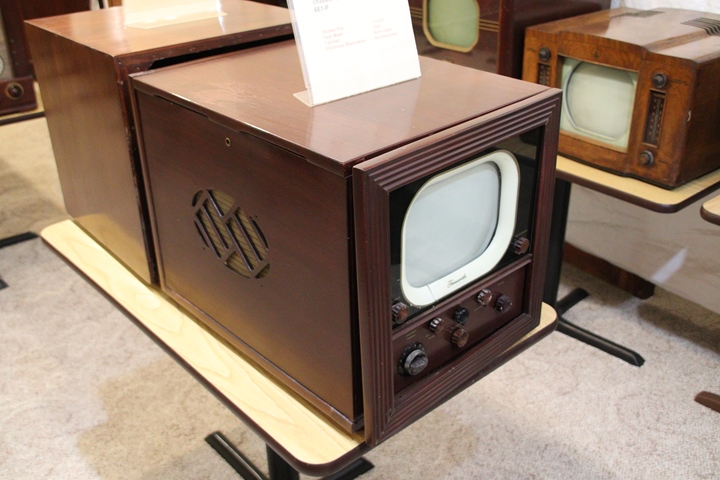
The 1948 651-P used the
same chassis as the 661-P. Author's photo added 5-5-2021.
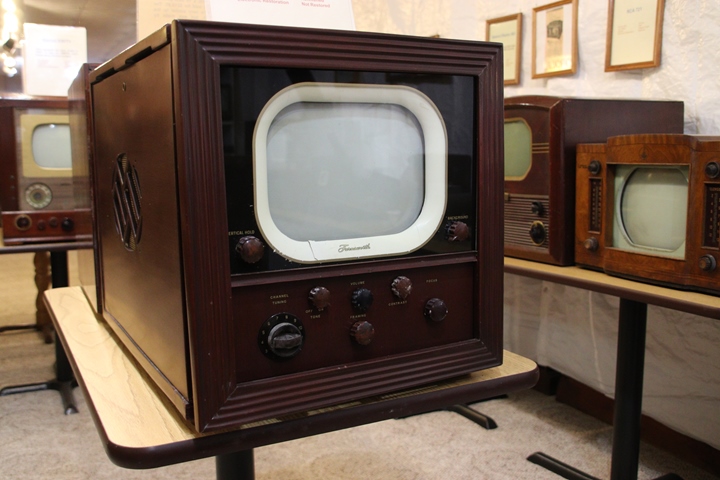
This TV also had a
10-inch screen. Author's photo added 5-5-2021.
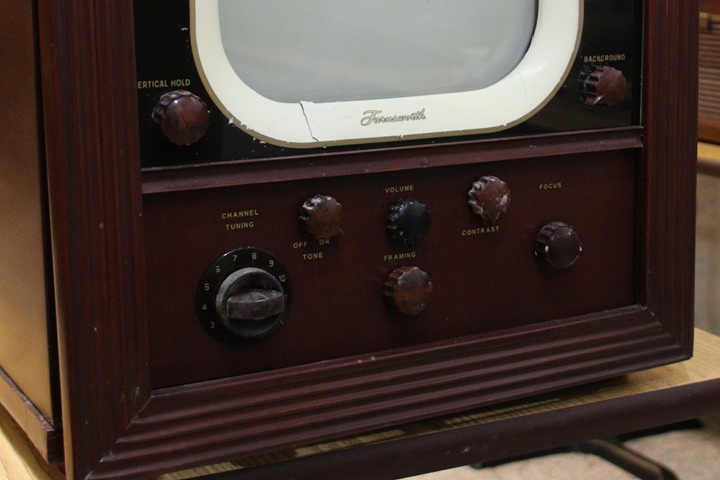
Author's photo added
5-5-2021.
The Philo Farnsworth House in Fort Wayne:
The house has an address of 734 East State Boulevard in Fort Wayne,
IN. In reality, it appears that the house is really on St. Joseph
Boulevard.
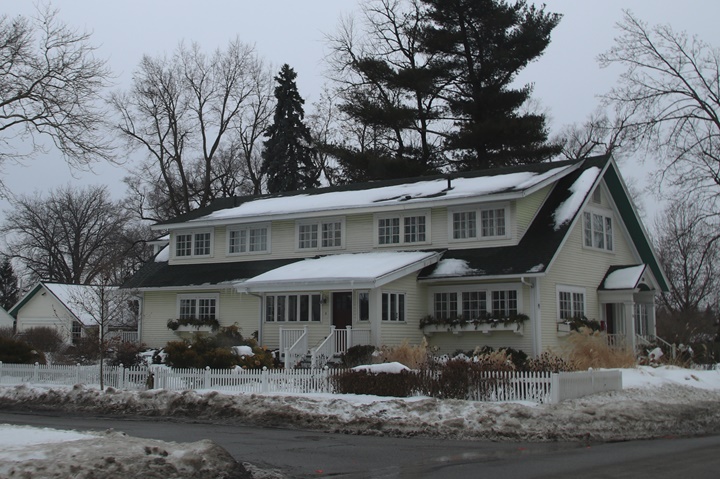
This photo was taken
from State Boulevard facing southwest. There is a small porch on
the north side of the house. This is probably why it has a State
Boulevard address. There is also an entrance on the St. Joseph
Boulevard side of the house. To me, this is the front of the house,
as guests need to park on St. Joseph to visit the residence. State is
a four lane road with no parking. Author's photo added 3-7-2021.
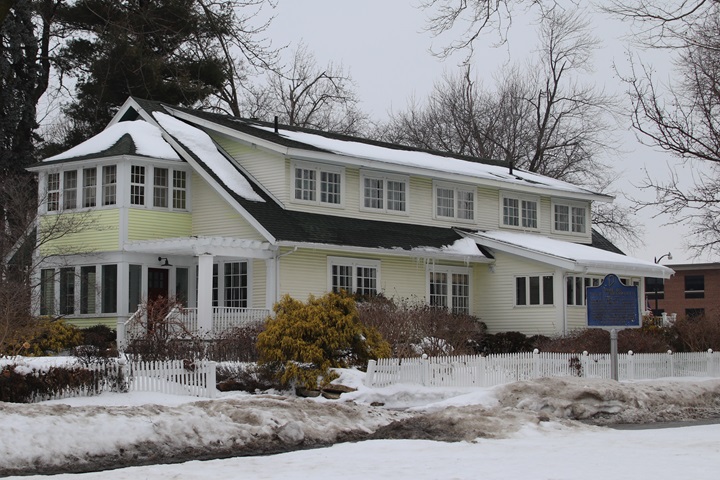
There is also a
nice entrance on the south side of the house that leads to the driveway
and the garage. Author's photo added 3-7-2021.
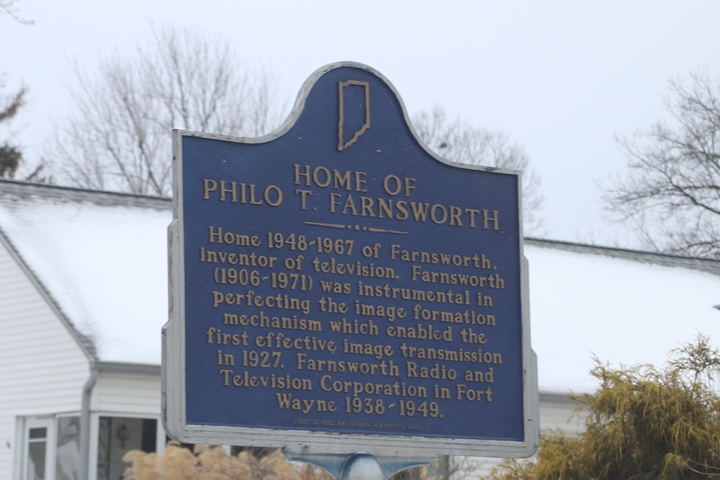
Author's photo
added 3-7-2021.
The Plants: In 1939 Philo
Farnsworth moved his research operation from Philadelphia, PA to Fort
Wayne, IN. His new company, Farnsworth Television and Radio
Corporation, purchased the Capehart Company factory on Pontiac Street in
Fort Wayne. During World War Two, this plant was the corporate
headquarters, research, and engineering center for the new company.
It also built a number of electronic products during the war.
The Case Radio plant on the southeast corner
of Marion, IN was purchased in 1939, and was the main assembly plant for
Farnsworth. Farnsworth also purchased the product line and
continued to make radios in the plant before and after World War Two.
In 1943 the company purchased a plant in
Bluffton, IN and in 1945 purchased another one in Huntington, IN.
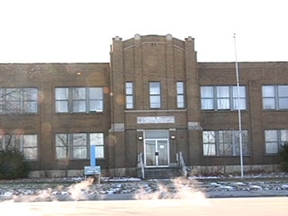
The Fort Wayne plant was located on Pontiac
Street in Fort Wayne. It was razed in 2010.
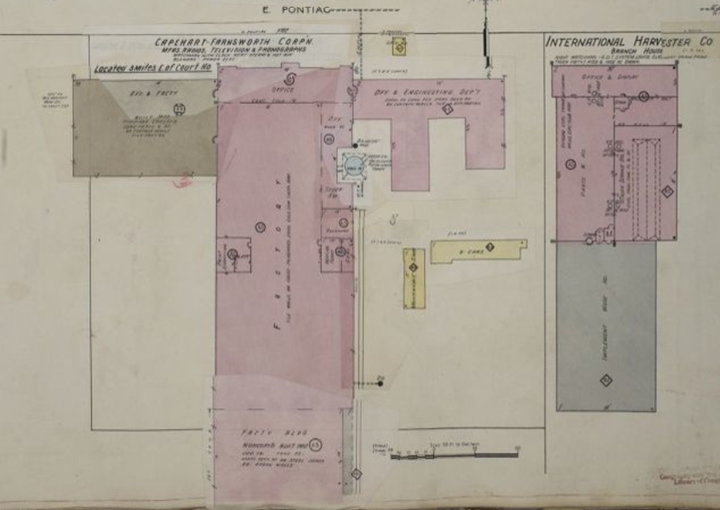
This Sanborn map shows the extent of the Fort
Wayne plant in 1951. It was just west of the large International
Harvester truck manufacturing complex. Image added 1-2-2021.
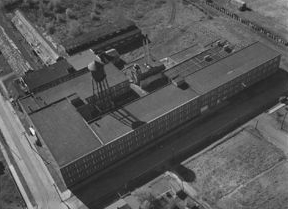
This is the Marion plant in the late 1930s.
In 1947 it had 260,000 square feet of floor space. With the Bluffton plant,
Farnsworth operated more conveyors for moving radios than any other factory in the
United States. The Marion plant began television production in the
spring of 1947. This plant was purchased by RCA in 1948 and
eventually became the source of picture tubes for its televisions.
In 2004 Thomson, Inc., the current operator and owner of the factory,
closed it down. Several fires at the former plant since its closing
resulted in the loss of the historical section of the plant.
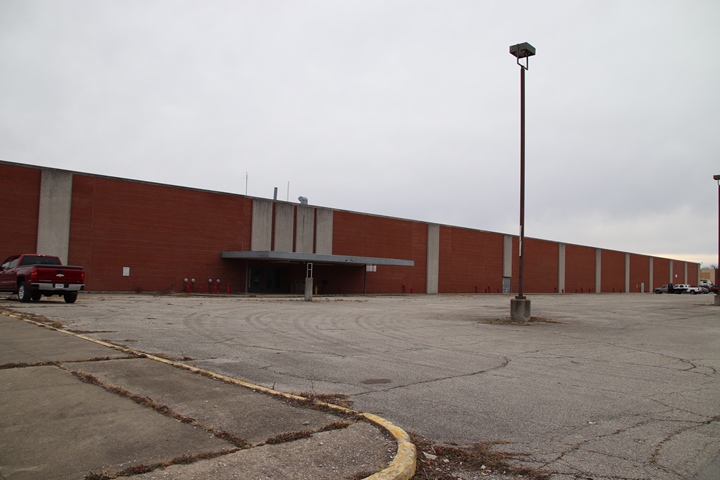
This is what is left of the former
RCA/Thomson picture tube plant after the several fires. Author's
photo.
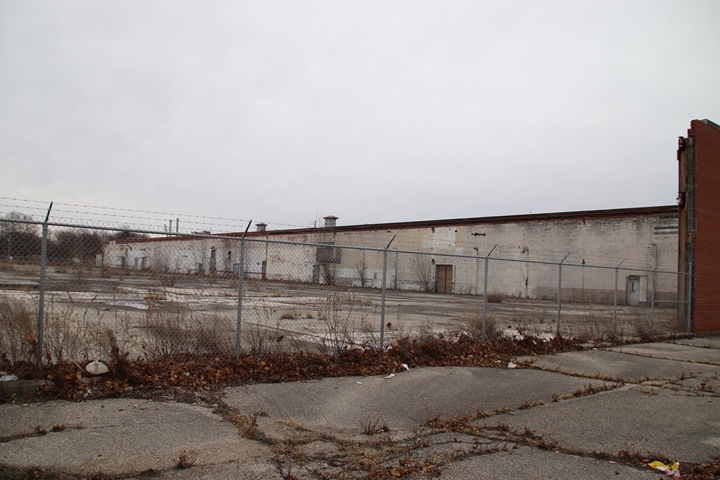
Author's photo.
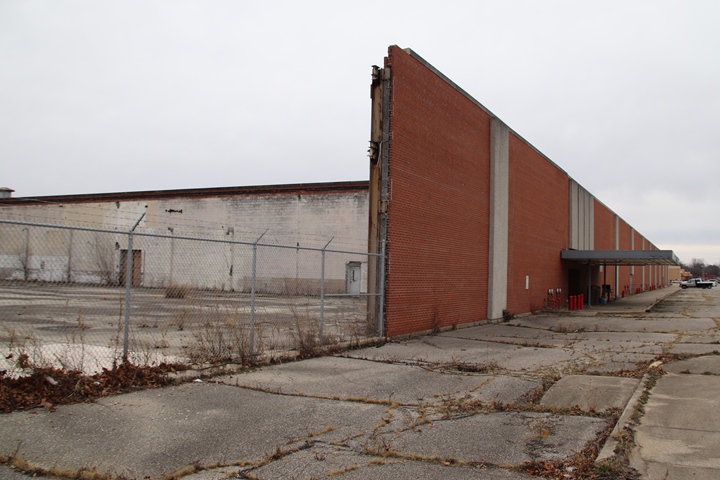
Author's photo.
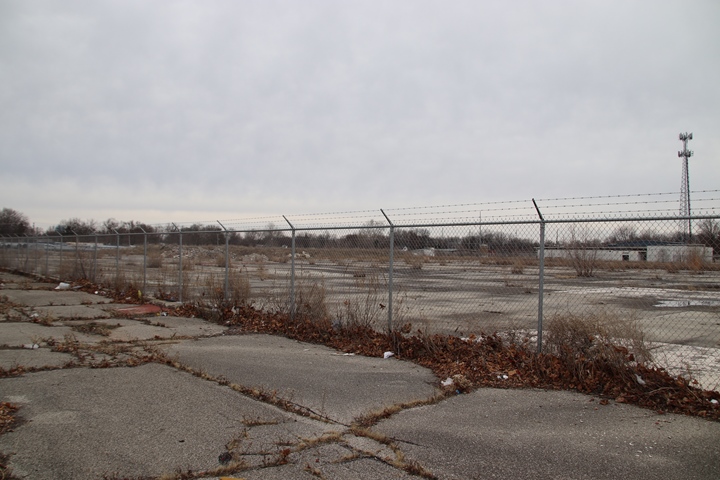
At least half, if not more, of the structure
burned. Author's photo.
|












































